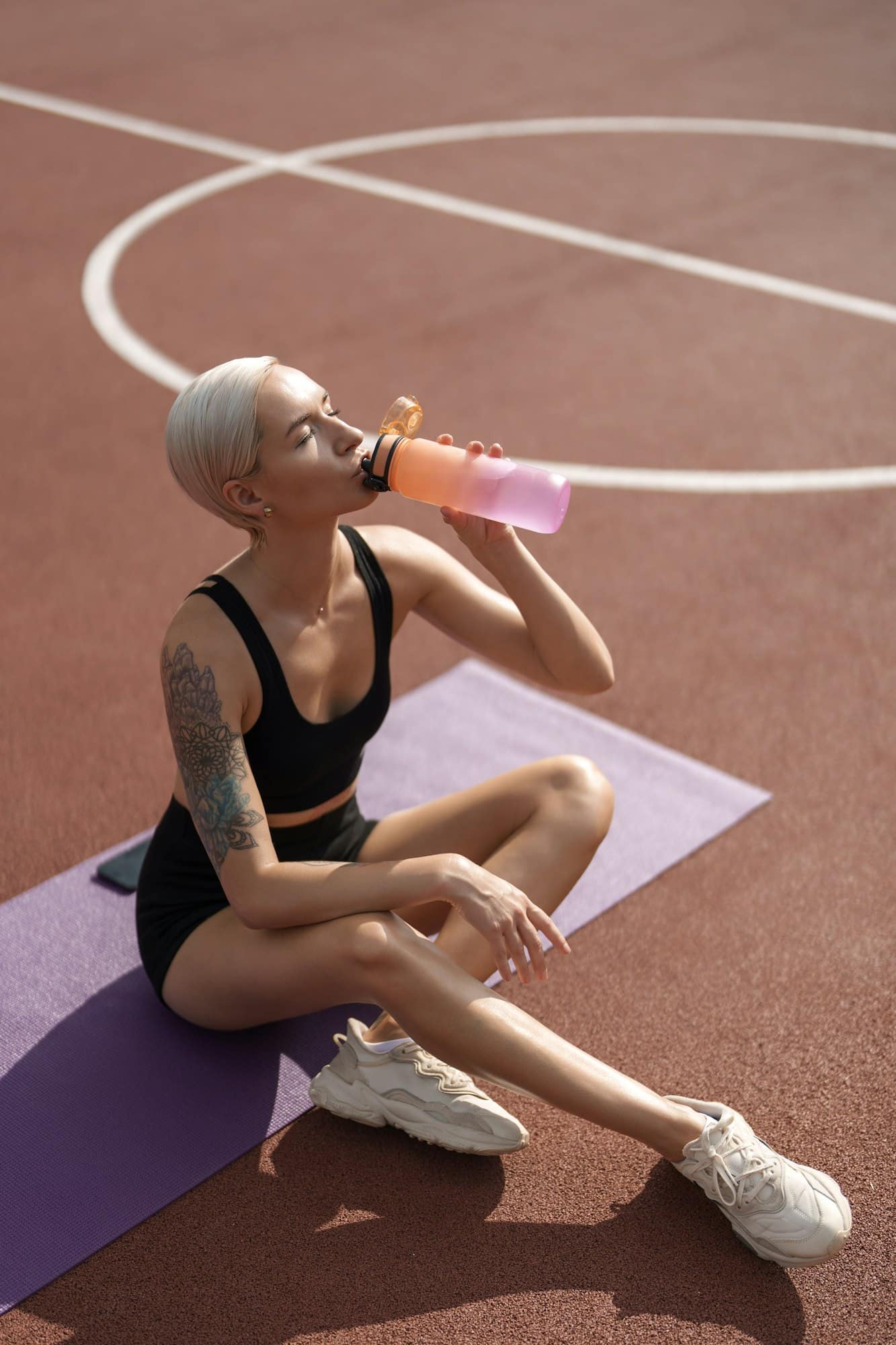As the mercury rises, the challenges facing marathon runners intensify, particularly the issue of hydration. Not only does the human body need water to maintain bodily functions, but the necessity increases manifold during intense physical activity such as running, especially in scorching climates. Dehydration can severely impact a runner’s performance, hence a well-devised hydration strategy can be a gamechanger.
Understanding Hydration in the Context of Running
The relationship between hydration and running is intricate and intriguing. First, let’s delve into why hydration is so crucial for runners.
In parallel : What’s the Best Method for Analyzing Jump Shot Mechanics in Elite Basketball Players?
The Science Behind Hydration
Water constitutes about 60% of the human body. It plays a pivotal role in our bodily functions, acting as a building material, a solvent for chemical reactions, and a transport material for nutrients and waste. When you run, your body heats up due to the burning of calories. To cool down, it sweats, hence losing fluids. This loss of fluids leads to a decrease in blood volume, which makes your heart work harder.
According to a study cited on PubMed, a 2% loss of body weight due to dehydration can cause a noticeable decrease in athletic performance. This percentage may seem minuscule, but let’s put this into perspective. If you weigh 70 kg, a 2% decrease amounts to 1.4 liters of fluid – not a small amount by any means.
In the same genre : Can Virtual Reality Simulation Enhance Tactical Decision-Making in Rugby Union Half-Backs?
Drinking water replaces these lost fluids, enabling your body to maintain its normal functions. However, the question of how much to drink can get complicated, especially when running long distances in hot climates.
Hydration Needs for Marathon Runners
The first step in formulating a personalized hydration strategy is understanding that hydration needs can vary greatly from one runner to another. Factors influencing fluid needs include age, sex, weight, fitness level, sweat rate, and the climate in which you are running.
A concept often heard in running communities is drinking "to thirst". According to a review on Google Scholar, this strategy works well for most recreational runners. However, for marathon runners in hot climates, drinking to thirst might not suffice. High temperatures lead to increased sweat rates, making it difficult for the body to keep up with fluid loss.
Personalizing Your Hydration Strategy
Now that we’ve understood the importance of hydration and personal hydration needs, let’s explore how you can tailor a hydration strategy to your needs as a marathon runner in a hot climate.
Calculating Fluid Needs
One effective way to determine your fluid needs is by calculating your sweat rate. This can be done by weighing yourself before and after a timed run. The weight loss gives an estimate of the amount of fluid lost during the run, which can be used to calculate the amount of fluid needed per hour of exercise.
Remember, this is only an estimate. Other factors such as dietary intake, urine output, and environmental conditions should also be taken into account.
Choosing the Right Fluids
Water is the most essential fluid for the body. However, when running long distances, you also lose electrolytes through sweat, particularly sodium and potassium. These are essential for nerve and muscle function, and a significant deficiency can lead to problems such as cramping, weakness, and even heart rhythm disturbances.
Including sports drinks that contain these electrolytes in your hydration strategy can help replenish electrolyte levels, especially during marathons in hot climates. Research from PubMed suggests that drinks containing 6 to 8% carbohydrate can also improve endurance performance.
Monitoring and Adjusting Your Hydration Strategy
Creating a personalized hydration plan is not a one-time task. It requires constant monitoring and adjustments according to changes in factors such as weight, fitness level, and climate.
Regular Monitoring
Regularly calculating your sweat rate and monitoring your hydration levels before, during, and after your runs is crucial to ensure that your hydration strategy is working. Symptoms of dehydration can include thirst, dry mouth, headache, and decreased urine output.
Making Adjustments
Adjusting your hydration strategy based on your observations and changes in external conditions is crucial. For instance, if you find yourself frequently feeling thirsty or dealing with headaches after your runs, it may indicate that you are not drinking enough fluids.
On the other hand, drinking too much water can also be problematic. Hyponatremia is a condition caused by drinking excessive amounts of water, leading to dangerously low sodium levels in the body. Hence, finding the right balance is crucial.
Implementing a personalized hydration strategy tailored to your specific needs can significantly improve your performance as a marathon runner in hot climates. It may require effort and constant monitoring, but the results will undoubtedly pay off in the long run.
Embracing Technology for Your Hydration Needs
In today’s digital age, technology offers tools that can aid in accurately determining hydration needs and adjusting your hydration strategy as required.
There are several hydration apps available that can remind you to drink water at regular intervals, track your fluid intake, and even calculate your sweat rate. Wearable technology like fitness bands can also monitor your heart rate, estimate your sweat rate, and provide real-time data to help you stay hydrated.
Aside from these, there are also smart water bottles on the market that can track your water intake and sync this information with your smartphone, helping you meet and track your hydration goals.
Embracing these technological aids can make the process of maintaining hydration levels easier and more effective, allowing you to focus your energies on improving your performance in the marathon.
Analyzing Your Personal Sweat Rate and Its Importance
With our focus now on the sweat rate, we delve into the details of this pivotal bodily process and its effect on your hydration status.
Understanding Sweat Rate
The sweat rate is a measure of how much you sweat during a certain period, typically an hour of exercise. This rate can vary greatly from person to person and fluctuates depending on factors such as temperature, humidity, clothing, and intensity of exercise.
Your sweat rate directly influences your fluid needs. A high sweat rate implies higher fluid loss, necessitating a higher fluid intake to maintain hydration. Conversely, a low sweat rate implies lower fluid loss, requiring less fluid replacement.
Calculating Your Sweat Rate
To calculate your sweat rate, you need to determine your body weight before and after a given period of exercise. The difference in weight corresponds to the fluid lost through sweat.
To get an accurate reading, it is recommended to carry out this test under conditions mimicking those of your marathon, including similar temperature and pace. This will provide you with a more accurate estimate of your sweat losses during the marathon.
Sweat Rate and Hydration Strategies
Once you have an idea of your sweat rate, you can devise a hydration strategy that aligns with your fluid losses. For instance, if you find that your sweat rate is high, you might need to increase your fluid intake during your runs to avoid dehydration.
Remember, a hydration strategy based on your sweat rate is not a static plan. Your sweat rate can change due to factors such as climate changes, changes in your fitness level, or changes in your body weight. Therefore, it is important to recalculate your sweat rate periodically to ensure your hydration strategy remains effective.
Conclusion: Reaping the Benefits of a Personalized Hydration Strategy
Neglecting hydration can lead to dire consequences for marathon runners, affecting not only their performance but also their overall health. On the other hand, a thoughtful, personalized hydration approach can significantly improve your performance and make running in hot climates a more pleasant experience.
A personalized hydration strategy, meticulously designed around your sweat rate, can prevent the risk of dehydration and hyponatremia. Using aids such as hydration apps, smart water bottles, and fitness bands can simplify this process and help you to stay on top of your hydration needs.
Moreover, it is critical to remember that fluid needs go beyond just water. Electrolyte losses through sweat necessitate their replenishment, which can be achieved with sports drinks and certain foods.
Finally, continually monitoring and adjusting your hydration strategy is paramount. As your fitness level, body weight, or environmental conditions change, so must your hydration plan.
Incorporating these hydration strategies into your marathon training and competition can ensure that you are optimally hydrated, leading to enhanced endurance, improved performance, and a better overall running experience. With time and practice, managing your hydration will become second nature, allowing you to focus on what truly matters – crossing the finish line.











